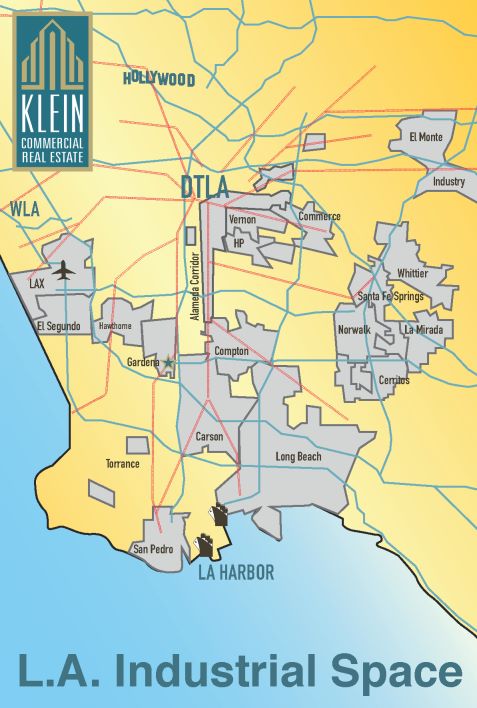The industrial property business has grown from a real estate niche serving mostly large corporations and owner/users to a favored investment of large institutions. The rise coincided with the great manufacturing upheaval of shuttered plants as companies shifted production offshore. Goods return in containerized shipments and begat the new industry of logistics. The result was increased liquidity of both goods and capital. A situation that is ideal for warehouse development and investment. Today’s industrial marketplace is made up of global and national 3pls, shipping companies, e-commerce, and on the capital side, Industrial REITS, large investment funds, and a handful of developers. The Covid Supply Chain phenomena and an increase in tariffs has compounded an already unbalanced space market to acute levels
Where better than Los Angeles does the nexus of capital and industrial space reach its maximum potential? Los Angeles is home to the largest concentration of high industrial prices in the country. It’s a vast geography with same day road service to Northern California, San Diego, Inland Empire, Phoenix and Las Vegas. The twin ports of L.A. and Long Beach are the largest U.S. Gateway accounting for 35% of containerized imports. Union Pacific and BNSF rail service connect L.A. ports to almost all major US markets using a network of intermodal routes and inland ports. The result is an enormous off-port logistics industry stretching across the entire country allowing profitable industrial building development for many national tenants and local firms. This continuing evolution creates more demand than spaces that can be developed and is beyond the planning capacity of most cities and companies alike. Space imbalance and large capital allocations are allowing investors to corner the market in several fundamental areas.
Land Rents are disconnected from their primary purpose as an input to new construction. Generally, supply disruptions at the port immediately spillover to nearby land sites because any private land rent will be less than the port will charge. The income generated from parking trucks and containers exceeds the land’s contribution to new development. At today’s land prices, developers can simply rent the land, if entitled, for outside storage and clear 6% return on investment. In a few limited cases, developers can benefit from timing or zoning restrictions to capture a development profit.
Buildings are being sold with a large gap between replacement value and new construction costs. Soaring land and construction costs contribute to new buildings at $350-$400 per square foot in contrast to older building sales at $260-$270. The $100 per foot gap between new and existing allows both for a reasonable return on investment (5%-6%) and an adequate profit on resale. My favorite personal target are the many small buildings in the L.A. area. It’s a completely different market than the big industrial market. Very little consolidation, not much overall real estate experience, and hard to raise capital in bulk. There are almost no large institutions because gross sale price per building is below their threshold of $5,000,000.
On negotiations, capital and big investment companies have all the leverage. There’s almost no vacant space and it leases quickly with multiple offers. Corporations, tenants, and owner/users have almost no alternative but to “pay-up”. There are still a few families left that can be more generous, but their numbers are dwindling due to unsolicited offers. Finding space requires multiple sources, personal contacts, and relationships. More often I am searching for spaces that are not yet listed to fill client requirements. Lots of capital, high sale prices, and experience makes this a perfect “brokers market”.
While real estate is known to be a cyclical business, there are no signs of letting up. Interest rates will stay low, goods will still come through the ports, and the L.A. metro remains an enormous population center. If there is a pullback, it won’t last long, and prices will continue to climb. All you can do is make the best decision in the market you have and not what may be in the future.

